While the car world is obsessed with everything boosted these days, many still yearn for the smooth power delivery and sonorous tone of a naturally aspirated engine. Of course, everyone still wants to go fast, so here’s how you go about getting more power out of your car without bolting on a big turbo or whining supercharger.
Intakes: This Can Get Pretty Invovled
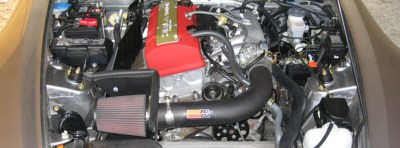
The intake is one of the first modifications made by many budding car enthusiasts. Throwing on a chromed intake pipe with a big pod filter was the mod to have back in the Fast and Furious era. Power gains can be had, though typically these are minor – on the order of 5-10 horsepower at most. It all depends on the car in question. A BMW M5 V10 was designed for high performance, with a highly advanced intake with individual throttle bodies from the factory. It’s unlikely any eBay parts are going to unlock horsepower that BMW’s engineers didn’t already find. Conversely, early Mazda Miatas are known to have a restrictive intake, largely due to the flap-type air flow meter. Replacing this with a freer-flowing setup has merit.
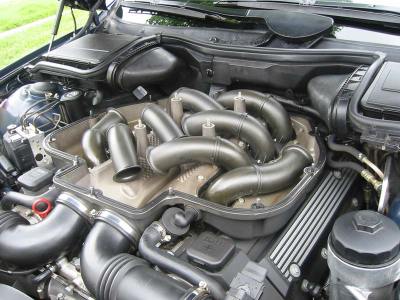
Intake mods can range from simple to complex. With many modern cars, it’s a case of removing the stock factory parts and bolting in whatever shiny new pipes you bought online. These intake kits usually bolt in front of the throttle body, leaving the stock manifold as-is. Alternatively, particularly if you’re working on an old carby V8, you may be replacing the whole manifold entirely. This generally involves a new set of intake gaskets and some fresh sealant in some cases. At the other end of the scale, one can go as far as installing a full individual throttle body kit, requiring modifications to linkages, fueling, and even braking systems. These are best attempted by those willing to suffer for their build.
Exhaust: A Bit More Beginner Friendly

If you crave more rumble, this is the mod for you. Exhaust modifications range from a simple muffler swap at the rear of the car, to a full kit from headers to tailpipe.
There’s often some small gains to be had by upgrading to a freer-flowing exhaust system. Factory parts are often made with an eye to ease of manufacture and cost, and may not be the most efficient design. Additionally, the average motorist likes a nice, quiet car. Swapping these parts out for something less restrictive that makes more power and noise is a no-brainer for a true enthusiast. Gains are generally on the order of 15hp or less, but it’s an important modification to make on the quest for bigger power numbers in concert with other mods. Plus, you want other people to be intimidated by the growl of your engine as you idle through the McDonald’s drive through, right?
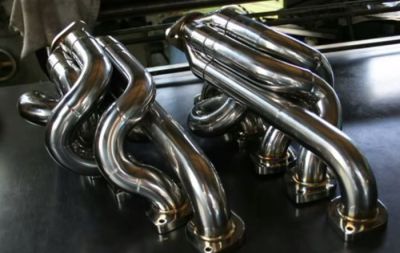
Exhaust mods are usually an easy job, though modern cars with tighter engine bays can prove more difficult to work on. It’s usually a case of undoing a few bolts, removing the stock parts and installing the new ones. New gaskets are key to avoid leaks, and bring plenty of WD40 if you’re working on an older or rusty vehicle. Make sure to use a good socket set, too. Exhaust bolts have a habit of being tough nuts to crack, and if you snap a stud on the engine, you’re in for a world of hurt.
Cams: When You Crave Some Risk in Your Modding Projects
The camshafts in a piston engine are what control the opening and closing of the intake and exhaust valves. By altering the amount the valves are opened (lift) and how long they’re opened (duration), it’s possible to alter the engine’s characteristics. Increased lift and duration lets more air into the cylinder, creating more potential power.
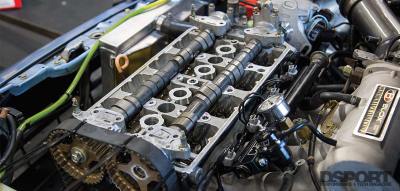
However, there’s always a tradeoff. Greater lift can cause problems with valve float at high RPM, where the valve spring can no longer keep the valve in touch with the cam. This can result in catastrophic damage if the valve contacts the piston. Greater duration can create greater overlap – the time at which both intake and exhaust valves are open at the same time. This can hurt performance at low RPMs, and give the engine a lopey idle. Additionally, it’s important to consider the proper supporting mods. Often a cam change may require upgraded valve springs to deal with the new profile.
Generally, a cam swap enables gains to be made in high end power or low end torque, but rarely both at the same time. Often, they’re discussed in terms of application — street cams, race cams, and so on. A race-oriented cam may give great top end power, but very poor performance low in the RPM range, which would make it awful for driving around town. Being realistic about your build’s application is key to making the right choice.
Heads And Porting: Delving Into the Jobs For the Pros

For some engines, mostly classic American V8s, it’s possible to buy new cylinder heads off-the-shelf as a performance upgrade. Additionally, in some cases, it’s possible to swap heads between different engines of the same family, as is often done with Honda B-series motors in the JDM scene.
Installing a high-performance head on your engine can be a major performance gain, and is often done along with a cam change to make the most of the better flowing part. A performance head will have less restrictive ports, and may also slightly change the compression ratio of the engine, depending on design. Often, larger valves may be fitted than stock, further helping flow. For those with older iron-block motors, there’s often an extra benefit to be had, too. By fitting a modern aluminium head, there’s a huge weight saving along with the power gains.
An alternative to buying a new performance head is modifying a stock part. A head can be ported, where the intake and exhaust ports are carefully machined out for better flow. On some heads, there’s also scope to fit larger valves, once again by machining the original part. These jobs are often performed by skilled machinists, as tolerances are tight and getting things wrong can destroy an engine very quickly.
Head swaps can be a more intermediate level job. It involves removing manifolds and often accessories from the engine, as well as timing gear. Making mistakes in reassembly can cause valves and pistons to collide, causing major engine damage. Dilligence is key to make sure your motor doesn’t end up overheating or smashing itself to bits.
Building an Engine: Down the Rabbit Hole We Go
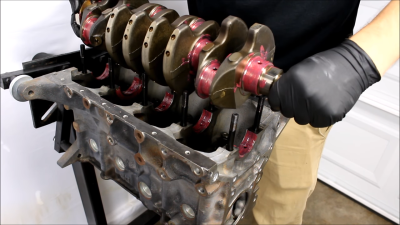
If you’re hunting for ultimate power in a naturally aspirated engine, you’re generally looking at building a motor. This involves disassembling the engine, and putting it back together with fresh parts to completely change its performance characteristics. Building an engine is not for the faint of heart, but opens up options like stroking and boring which can provide major power gains for serious builds.
The “stroke” of an engine is the distance the pistons travel up and down within the cylinder. Stroker kits involve swapping out the crankshaft, rods, and sometimes even pistons, to give the engine a greater stroke length, and thus displacement. This greater displacement allows the engine to suck in more air, creating more power, and the pistons have greater leverage on the crank, creating more torque.
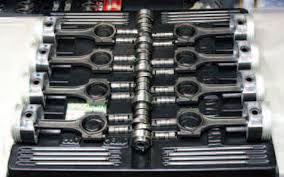
The bore of an engine is the diameter of the cylinder. Increasing this dimension increases displacement, and allows the engine to suck in more air, creating more power. Boring out an engine requires new pistons to be fitted, and can cause issues with cylinder walls cracking if taken too far. .
When replacing pistons, crankshafts, and associated parts, there’s also the option to choose parts to change the compression ratio. Increasing compression ratio produces more power from the combustion reaction, but also increases the risk of the fuel-air mixture detonating, which causes engine damage. This can be staved off by running fuel with a higher octane rating, which obviously comes at a cost.
Building an engine involves choosing a large number of very specific parts which have to be exactly right in order to all spin together at thousands of RPM for thousands of miles without destroying themselves. Additionally, assembly requires the utmost attention to detail and the use of specific, high-quality tools. Tolerances of tiny fractions of an inch must be measured accurately, torques set just so, and lubricant applied properly to all the relevant areas. Miss one step, and it’s possible to turn thousands of dollars of precisely machined metal into a boat anchor in seconds flat. It’s a job that is achievable by the home mechanic, but requires serious dedication and investment of both time and money.
A Note On Tuning
When making changes to the way air flows through your engine, it’s important that the fueling changes in kind. Otherwise, you’re not making any more power, and you’re risking detonation and damage. The tuning your car will require depends on a number of factors, from the parts you’re fitting, to the way your engine manages air and fuel.
For modern fuel injected cars, oftentimes, simple mods like an air filter kit or new exhaust won’t require any changes. The sensors attached to the engine’s ECU can detect the amount of air coming in to and leaving the engine, and adjust fueling to suit. Sometimes, even a sneaky cam change can be pulled off without modification. A great example is the original Mazda Miata, which runs very rich in the high RPM range. Aftermarket companies noticed this, and supplied mildly hotter cams which flowed a touch more air up top, taking advantage of the extra fuel already there to make more power. However, generally if you’re doing more than some basic bolt ons, you may need to get your stock ECU tuned, or even replaced entirely with an aftermarket unit.
For carburetted builds, the story is much the same. While a mild change to a new muffler likely won’t require any changes, a full exhaust or cam change will demand a retune. At this point, it’s time to get out the carby jets and the timing light, or take the car to a shop that can do it for you. Without doing this crucial step, it’s likely your mods will simply make the car run worse, not better!
Conclusion
Making big power gains in a naturally aspirated build is more complicated than just buying an eBay turbo and slapping it on in a weekend. However, for some, the effort is worth it, for the incomparable sound and smooth power curve that is only available with such an engine. Whatever your automotive journey, may it be a good one — with as few trashed engines as possible!
















The startling omission from this article is no mention of simulation tools. IC engines are all about the combination. In a highly optimized engine even minor changes to intake or exhaust typically require changes to valve timing (camshaft).
For example, if you are evaluating different primary exhaust tube tapers, or balance tube diameter and location… You really need to tweak the valve events to realize max benefit.
Optimizing all of those factors is best done with a good simulator. The best simulators also have optimizers. The optimizer helps you converge on a configuration while evaluating changes. Is your goal peak torque at a particular rpm or over a range?
Simulation was key to my personal race engine development in the mid 90’s. I had the benefit of working at the Big 3, and using their state of the art tools.
Good simulation tools tend to be out of reach of many amateur gearheads – either in terms of price or ease of use. There are some cheap and accessible ones like Desktop Dyno. But in many cases, someone who is just starting out won’t be in a position to fabricate their own headers, and is likely to be limited in terms of what sort of cam grinds are available.
Engine simulation tools could be a post in themselves – but is a bit higher level than what the original post covers.
Plus manufacturers don’t give to the general public the accurate tech info that would make them useful, garbage in, garbage out.
This is “How To Get Into Cars”, a primer for those new to the scene. Simulation is great but really not used by… even experienced gearheads like Freiburger, Dulcich et al.
You’re right that it is an awesome tool, but it’s not really for the person starting out. Heck, most dudes I meet at the racetrack haven’t touched simulation in 30+ years.
Well Hackaday hit the comment jackpot with hackers and their cars e.g. Jenny’s electric article (306 comments) and Lewin’s diesel article (246 comments), so will the 3rd time be charm?
“Exhaust bolts have a habit of being tough nuts to crack,”
I have found them easy to crack/break at times.
Yes, easy to snap, but hard to get the damn snapped off stud out of the hole – especially in aluminium heads!
Last head I took off, snapped 3 studs… but then when I came to get them out, they just twiddled out with a pick… think it’s because they penetrated the exhaust port, so when I’d wire brushed the gunk off the last few threads they were free.
I’ve rarely had problems like this if I used penetrating oil and heat. I’ve found that many people don’t have any sort of torch at all in their garage, or they’re afraid to use it. A very valuable tool when working with rusted fasteners.
I’m really cautious with any sort of flame in the engine compartment. This is a little different, but my brother in law is currently in a medically induced coma with third degree burns over about 30% of his body because of a gasoline/air explosion from pouring gasoline into the carburetor of a running car last week. I’m definitely big on penetrating oil and impact wrenches, though.
I also “dream” of fitting EFI, electronic ignition, and headers onto my 100hp Ford Flathead, but Publishers Clearinghouse will have to knock on my front door first.
EFI refits aren’t nearly as expensive as they used to be, if you know where to look. ECUs from Microsquirt or Speeduino can cost the same or less than a good set of headers. Some sensors can be had from the junkyard, and most aftermarket ECUs can be used with a variety of crank/cam sensors and ignition parts. Tuning software for the above-mentioned ECUs is free for the basic version and $50 to unlock advanced features like auto-tuning. Total cost will tend to vary depending on engine used and parts needed, but it’s possible to do the conversion for less than $1k on certain platforms.
Thank you, sometimes even $1K can be too much for a bottom feeder like me, but I’ll look around!
speeduino bom is something like $50 + pcb + arduino + mechanical parts from pullapart
Yes, MPI swaps are cheap and readily available. facebook (blah) kjetkillers group is all about throwing out antiquated Bosh garbage setup and replacing it with modern, reliable, efficient and performant alternative. $500 buys you a full bolton swap kit (fuel rail, Bosch injectors, Bosch fuel reg, cabling, plumbing, piggyback computer with MAP sensor, air temp sensor) for older cars https://kjetkillers.pl/pl/c/Zestawy-EFI-Ukladow-Wtrysku-Elektronicznego/40
Carburetor is just a TERRIBLE mechanical computer, why bother in the age or $2 arduinos and $10 MAP Sensors?
I don’t know if I’d prefer it the other way round though, off the shelf plug in wiring harnesses, and build your own ECU from scratch.
The old bosch setups work. There were thousands of hours that went into making these systems work perfectly under every conceivable sensor input condition. If you think you’re going to improve on that by adding on some hack ass “modern” piggyback system you are incorrect.
@Padrote same way your grandmas BW CRT TV works, or a steam locomotive. Ze Purity!
Improving on it with even simplistic piggyback is a fact.
>under every conceivable sensor input condition
state of the art 45 years ago! Every owner will tell you how great they are when the car gets older, the multitude of tuning options given to you by maybe two screws(if even).
Nothing says efficiency like air fighting with huge flap in the intake, nothing says precision like that flap moving a valve needle, and that brilliant 50 year old clothes iron style bimetal warm up regulator controlling cold start by simply measuring time the thing warms up …
Don’t forget the nitrous
That’s right after “boosting the engine with forced induction” .
And bundled with” uprating the parts you fucked up inside the engine with stupid fun amounts of boost”
Too true, and the reason that I called off any big HP gains in my car upgrading play in the past.
I try to learn from other’s mistakes, and build my toys to stop just a *bit* shy of the “things go boom” level…
+1 – sooo true!
I usually get into cars through one of the doors
But why bother will all that modding mess when ICE is still a piece of turd when compared to electric motors. We should be investing in fast and clean cars.
Ain’t no fun if you’re not unleashing the rumbling and loud sensation of ragnarok when the fun pedal meets the floor.
I’ve done a fair bit of modding in my time, and it was a lot of fun.
However, having driven an electric car about 12 months ago I subsequently ditched most of my ICE modding stuff and went electric.
If you ever get a chance, have a test drive of a full electric (not this hybrid crap – the worst of both worlds) and you might just decide the the complications of ICE are really not worth the minimal gains obtained (unless you spend stupid) modding.
As many have written, electric cars are unlikely to save us. I bought mine mostly because it is fun to drive, and it may just spur more manufacturers (and governments) to wake up and move on. Which would be good.
Even the more “basic” EVs are really fun to drive. My Bolt has nowhere near the specs of a Tesla, but it’s still the most fun car I’ve ever driven.
Now I just wish someone would offer an affordable AWD electric… Teslas are the cheapest AWD vehicles, and that requires dealing with Tesla. (I originally ordered a Model 3 and it was the second worst customer service experience of my life.)
If you’ve only had one worse experience, that must mean your phone company is also your cable and/or wireless/cellular company, ouch.
Bear in mind that in some areas, the act of tuning outside of factory spec is “frowned upon”. That said, ya missed out on ye olde crosspipe mod for the exhaust.
When you start down the custom intake manifold route, or really any accessory other than exhaust, a laser cutter and a roll of gasket material are really helpful. There are several online guides to using photographs of the engine and parts to generate your own accurate gasket outlines, if you can’t find dimensional drawings online or you’re doing something weird and they don’t exist. There are also a lot of people fabricating their own intake manifolds using individual throttle bodies off motorcycles, that are supplied with pipe-type outlets that attach to the engine intake manifold stubs using silicone tubing and pipe band clamps. That drastically simplifies jigging and fabrication involved in a custom intake and gets you a fuel injection system with a lot less work. (I hadn’t realized before starting down that route that you don’t need to match static displacement volume to get the right throttle bodies: you need to match flow rate. A 750cc bike engine that runs to 14K rpm can flow enough air for an old 1.8 liter automobile engine that only manages 6000 rpm.)
Next frontier: swapping heads from wholly different makes. 1970’s-era block with a modern motorcycle head and its flow characteristics.
Frontier after that: fabricating your own heads, or entire engine, like John Britten did.
You can mix and max your engines too. Certain block, taller pistons from something else, shorter rods to play with rod ratio. Or meatier crank to offset grind and give you 3mm x bore area more swept volume. Then there’s all sorts of other fun with making spacers out of delrin or aluminum or whatever, either for keeping your charge cooler or making curves wider radius. Maybe your 60mm throttle body is only 48mm in the middle, damn, port that sucker, and shave the axle/pivot whatchamacallit, then knife edge or round it. Then you can back cut your valve for more valve curtain area, which also may lighten them, so they don’t float so early, keep standard springs then, maybe drill holes in your rocer arms, less reciprocating mass. I’ll shut up before I expose any more rabbit holes that people want maps for.
I’ve read that the Mitsubishi 4g64 block/pistons with the 4g63 head/crank/rods makes a 2.1L turbo that spins at 10K RPM on factory parts. Crazy street engine for 500 worth of junkyard parts.
Yes there’s a lot of mix and match you can do in the Mitsu engines, 6 cyls too, there’s even ppl combining 4G64 and neon parts I think.
Neon SRT has the 4g64 2.4l with a turbo.
Nah, that’s one of those “common knowledge” things that are complete BS. Just because the capacity matches and bore spacing is same. Which is what lets some parts fit with heavy modification.
Kia Optima around 2001 also has heads that swap
Yah, Hyundai and Kia have had Mitsu motors in the past, and then had their own versions which were substantially similar, and then supposed clean sheet new designs that again looked real familiar and carried over some dimensions.
Suck, squeeze, bang, blow. Maximize each, and minimize heat and you win.
The 2006 Formula 1 engines were probably the N/A peak ot the art. 2.4L V8 spinning up to 21,000 RPM. Variable length intake and Hemholz exhaust @ 90 kilos.
Artwork.
Unarguable benefits to electric motors, and unarguable limitations to ICE.
But an electric motor will never be able to provide the tangible feedback of at least some types of ICE – 90-degree V in particular.
People stare at my Moto Guzzi when it sits there idling while I put on gloves and helmet. It shakes from side to side – a product of the slight shift in the combined centre of mass as the engine runs. One fellow even called out loud “It’s breathing!” And it does – the rubber carb manifolds compress a little on intake, and the carbs move in and out ever so slightly.
in other words you like the flaws and drawbacks of old technology, the way audiophools love “warm” (aka distorted nonlinear) bulb amps and crackling turntables.
Mound a Concrete Vibrator under the seat and there is your “purring” ;-)
moto-guzzi competes with harley-davidson for the “owner should not be driving any more” award
Few advices from me 1. do not remove muffler or instal fart cans youll wake up my kid and ill find you and kill you. seriously race cars dont belong in cities their engines can scream all you want on race track but in cities dont rev up your screaming civics or rattling v8s there are people living there especially with small children youll understand once youll spend carring toddler in your arms for few hours to get it sleep just for some idiot to wake her/him with his modded bmw or harley. 2. don’t speed in cities yes there are long straights but again there are schools nearby, playing fields you do not want to kill a kid because you went 80kmh in 40kmh zone. 3. 95% of girls don’t care about noise levels, torque, 0-100 and other bullshit they notice if your car is clean and if it looks nice – detailing service for 100euros that will make your car shiny and sparkling clean will drop more pants than dirty banged up miata with 10 000 euros in bespoke parts under the bonnet. Now go enjoy car hacking :)
And git off’n my lawn!
B^)
Speaking of schools, you appear not to have attended any. Failure to capitalize, run-on sentences, and made-up statistics are all bad practice.
When I was a teen in the 1970’s it wasn’t very difficult to bolt on an Edelbrock Manifold, a Holley double pumper carb, a set of headers, maybe tinker with the ignition using a dual point distributor or in my case a Delta kit capactive discharge ignition system and have some fun. Today it’s a different world. Many of the factory features of modern cars like fuel injection were things we could only dream of back then. Regardless of era or mods installed my motto to live by is “no good deed goes unpunished.” Every component of a modern car is dialed into what the factory expects it will need to handle. If you increase HP and torque you better beef up the suspension or things like floor pans ripping themselves apart. My current platform is the 89 – 97 MN12 Ford Thunderbird. You might find if you install a larger rear stabilizer bar you just might start tearing up the sheet metal cross brace behind the rear seat unless you install additional sub frame braces, etc. I’m really amazed at how many people rip out the air filter box and drop in a K&N or equivalent conical air filter under the hood without ensuring it does not inhale hot over heated air from under the hood. Take your time, find an online forum or group that caters to your ride and do ALOT of reading, learn from other peoples mistakes before making your own. The typical oversize wheels and tires may look cool but may throw alot of drive train and suspension components out of whack or result in sub par performance. Most important have fun, prepare to be frustrated at times that is all part of the fun.
Well, at least those K&N filters will prevent anything larger than a medium sized chicken from entering the engine!
They’ll grease up the Mass Air Flow sensor really good though, which throws their readings out of wack.
That’s the people that think you need the whole can of oil on it each clean.
Changing the tuned length of the intake can get your powerband where you want it. On my car it has more torque than HP at a lower RPM so a longer intake tract can increase that. I prefer torque and those numbers impress me more, plus HP is really just a math equation of torque x rpm dived by 5252 engineering constant. I can pull 3rd gear into tight 90* turns down to 1000rpm and accelerate from there with no bogging, it almost feels electric! I rarely even bring rpms over 3000 since torque drops there. 3.0 V6 Ford Probe LX Thinking of installing the Boss 302 roller rockers with more lift, since they are same except have to change to metric for hold down.
Unfortunately EVs most definately fall into the big buscuits territory. ICE has been around long enough, and produced in such scale, that even fairly advanced parts are cheap. Basic EV stuff is both hard to come by and expensive – but, once you are committed to spending over 20 or 30K on ICE mod gear then you have to ask if spending that on EV gear is going to be more fun.
Under that and it is still quite a few years off.
Ok, I let everybody bloviate for awhile before I let out my sage advice!
It’s simple. Pack as much fuel and air into it at the highest compression that is viable with your grade of fuel. Chevys are cheaper than fords and dodges are dodges. Foreign stuff can be fun if you can get your hands on lots of spare parts and grind away. 202 chevy heads always seem to crack. the 193s are better for the long haul. Always roll out the top end of your ford unless you enjoy very small parts. If you have a dodge you’re probably still working on the wiring. You’ll get that into your heads later; like we did in the past, kinda.
If you have an old 350 cut off the crank counter weights and make sure the mufflers are rotted off to the headers. Mix a batch of crete and fill those coolant galleries. Put a jetted out olds quadrajet, 800 cfm vs a 750cfm chevy quadrajet, ya know? Get more in. Mix up the highest octane gas you can get with an equal measure of high grade kerosene and fill er up a little unless you want a bigger fire at the end. When the heads are glowing you’re at maximum fun and high speed shrapnel is imminent.
Your children may worry about you, if you ever have any.
or, you know, drop $500 on iron 5.3 LS truck engine instead of playing expensive archaeology
“Nat Atmo” is incorrect. The proper term is “N/A” standing for “Naturally Aspirated”.
Haha, it’s not the only thing that’s well off the mark. The whole thing is just a “woo, look, I’ve found some stuff, look at me” and without content.